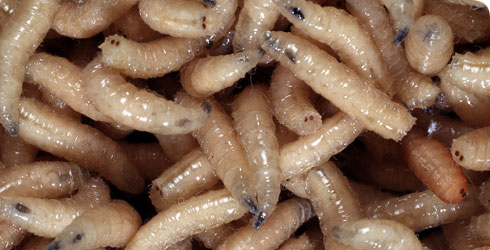Use in forensic entomology
Unless there is something to prevent their access, blowflies will rapidly colonise a human corpse. For this reason, they are frequently encountered by police who are investigating suspicious deaths.
It is now recognised that an exploration of the insect community on a corpse can contribute valuable information to the forensic investigation and the field of forensic entomology is relatively well established.
Due to their ability to locate corpses so quickly after death, blowflies have proved more useful than any other insects in giving an estimate of the minimum post-mortem interval (the time elapsed since death). To do this the forensic entomologist models the growth of the blowfly larvae recovered from the remains in relation to the scene temperatures.
To date, the forensic entomology team at the Natural History Museum have been involved in some 120 forensic cases. Calliphora vicina was the primary blowfly species recovered in most of these.
